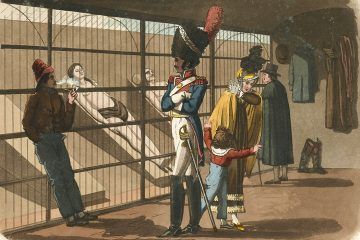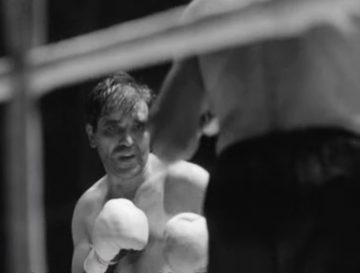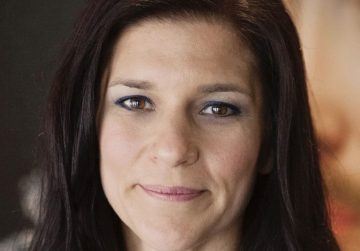Michael Armitage with Toby Kamps at The Brooklyn Rail:
 Rail: Were you always a figurative painter?
Rail: Were you always a figurative painter?
Armitage: I certainly was when I started, seeing as I was six. Throughout art school, throughout my BA foundation course, I was basically making figurative paintings. Then I got to a point at the beginning of my postgraduate where I was questioning the use of the figure in painting. I was questioning all of the elements that make up a painting, down to image, support, color, material, ideas. At that point, I took the figure out of my paintings, and I began making abstract compositions that sometimes related to figures but were much more loose explorations of ideas. Ideas that I’m still thinking about and working on today.
But then, after working mainly as an abstract painter for the best part of three years, I began thinking about the relevance of art in Kenya and in East Africa. One of the things that was clear to me was that there isn’t a huge audience there, certainly not a kind of gallery-going audience. So if I wanted to make my paintings have a kind of immediacy and relevance to someone there that walked in off the street, one way of doing that would be to have a reflection of the people that I was interested in talking to. So that made me consider putting the figure back into my work.
more here.

 Widening opportunity in education is the noblest of social and political projects. But the cost is now clear. In the ‘bad old days’ students were, as they are today, taught with commitment and passion, but sometimes eccentricity added a spark. Provided he – and it was usually a he – turned up fully dressed and sober and didn’t lay hands on anyone, the crazy lecturer could be an inspiration. Expectations were less explicit, the rhetoric and metrics of achievement were absent, which made everyone feel freer. Even applying to a university seemed less pressured, because it was so unclear what it would be like when you got there. You absorbed teachers’ anecdotal experiences and sent off for prospectuses, including the student-produced ‘alternative’ versions mentioning safe sex and cheap beer. Even after matriculation I had only a vague sense of the structure of my course. The lecture list was to be found in an austere periodical of record available in newsagents. Mysteries that today would be cleared up with two clicks on a smartphone had to be resolved by listening to rumours. This news blackout has been replaced by abundant online information, the publication of lucid curricular pathways, the friendly outreach of student services and the micromanagement of an undergraduate’s development. Leaps of progress all, if it weren’t for the suspicion that students might develop better if they had to find out more things for themselves. We learned to be self-reliant and so were better prepared for an indifferent world; we didn’t for a moment see the university as acting in loco parentis. Excessive care for students is as reassuring as a comfort blanket and can be just as infantilising.
Widening opportunity in education is the noblest of social and political projects. But the cost is now clear. In the ‘bad old days’ students were, as they are today, taught with commitment and passion, but sometimes eccentricity added a spark. Provided he – and it was usually a he – turned up fully dressed and sober and didn’t lay hands on anyone, the crazy lecturer could be an inspiration. Expectations were less explicit, the rhetoric and metrics of achievement were absent, which made everyone feel freer. Even applying to a university seemed less pressured, because it was so unclear what it would be like when you got there. You absorbed teachers’ anecdotal experiences and sent off for prospectuses, including the student-produced ‘alternative’ versions mentioning safe sex and cheap beer. Even after matriculation I had only a vague sense of the structure of my course. The lecture list was to be found in an austere periodical of record available in newsagents. Mysteries that today would be cleared up with two clicks on a smartphone had to be resolved by listening to rumours. This news blackout has been replaced by abundant online information, the publication of lucid curricular pathways, the friendly outreach of student services and the micromanagement of an undergraduate’s development. Leaps of progress all, if it weren’t for the suspicion that students might develop better if they had to find out more things for themselves. We learned to be self-reliant and so were better prepared for an indifferent world; we didn’t for a moment see the university as acting in loco parentis. Excessive care for students is as reassuring as a comfort blanket and can be just as infantilising. Adam Shatz in the LRB:
Adam Shatz in the LRB: At first, some believed the numbers of Americans dead of the coronavirus might stay in the five figures. Then, as the toll climbed into six, some grieved, some grew numb, some made comparisons to the numbers lost in wars, some threw up every possible defense to deny that these numbers mattered. How is it that so many deaths—194,000 in the U.S. as of this weekend’s official count—can feel so intangible, so hard for so many people to fathom?
At first, some believed the numbers of Americans dead of the coronavirus might stay in the five figures. Then, as the toll climbed into six, some grieved, some grew numb, some made comparisons to the numbers lost in wars, some threw up every possible defense to deny that these numbers mattered. How is it that so many deaths—194,000 in the U.S. as of this weekend’s official count—can feel so intangible, so hard for so many people to fathom? Many have called for a people’s vaccine for COVID-19—a vaccine provided universally and accessibly to the entire world population. The moral arguments may be familiar, but economics supports the case, too. Economics also helps to explain what role the public sector should play in developing a people’s vaccine and how such efforts should be coordinated across countries.
Many have called for a people’s vaccine for COVID-19—a vaccine provided universally and accessibly to the entire world population. The moral arguments may be familiar, but economics supports the case, too. Economics also helps to explain what role the public sector should play in developing a people’s vaccine and how such efforts should be coordinated across countries.

 We’re seeing
We’re seeing From the start, Lopes makes clear the fusion of style and substance that, no less than the fusion of reportage and reënactment, gives “Belarmino” its (and Belarmino his) artistic identity. The boxer—a former
From the start, Lopes makes clear the fusion of style and substance that, no less than the fusion of reportage and reënactment, gives “Belarmino” its (and Belarmino his) artistic identity. The boxer—a former  You’d think that overseeing an entire issue of The Scientist focused on artificial intelligence would cause my mind to wander far into the future—robotic researchers formulating digital hypotheses, whizzing about in sleek, metallic labs. But immersing myself in stories about the novel insights and deep analyses enabled by smart instruments and machine learning did not transport me into a vision of science in the 23rd century.
You’d think that overseeing an entire issue of The Scientist focused on artificial intelligence would cause my mind to wander far into the future—robotic researchers formulating digital hypotheses, whizzing about in sleek, metallic labs. But immersing myself in stories about the novel insights and deep analyses enabled by smart instruments and machine learning did not transport me into a vision of science in the 23rd century. Leftists excel at pinpointing what is wrong with capitalism. We wax lyrical about the possibility of some “other” world in which one contributes according to one’s capacities and obtains according to one’s needs. But, when pushed to describe a fully fledged alternative to contemporary capitalism, for many decades we have oscillated between the ugly (a Soviet-like barracks socialism) and the tired (a social democracy that financialised globalisation has rendered infeasible).
Leftists excel at pinpointing what is wrong with capitalism. We wax lyrical about the possibility of some “other” world in which one contributes according to one’s capacities and obtains according to one’s needs. But, when pushed to describe a fully fledged alternative to contemporary capitalism, for many decades we have oscillated between the ugly (a Soviet-like barracks socialism) and the tired (a social democracy that financialised globalisation has rendered infeasible). Covid-19
Covid-19 The term “super recognizer” first appeared in 2009 and describes people who can remember more than 80 percent of the faces of people they meet (the average is 20 percent). The neural-mechanism behind super recognition is still largely unknown, but the skill seems to be genetic and possessed by only about one percent of the population.
The term “super recognizer” first appeared in 2009 and describes people who can remember more than 80 percent of the faces of people they meet (the average is 20 percent). The neural-mechanism behind super recognition is still largely unknown, but the skill seems to be genetic and possessed by only about one percent of the population.